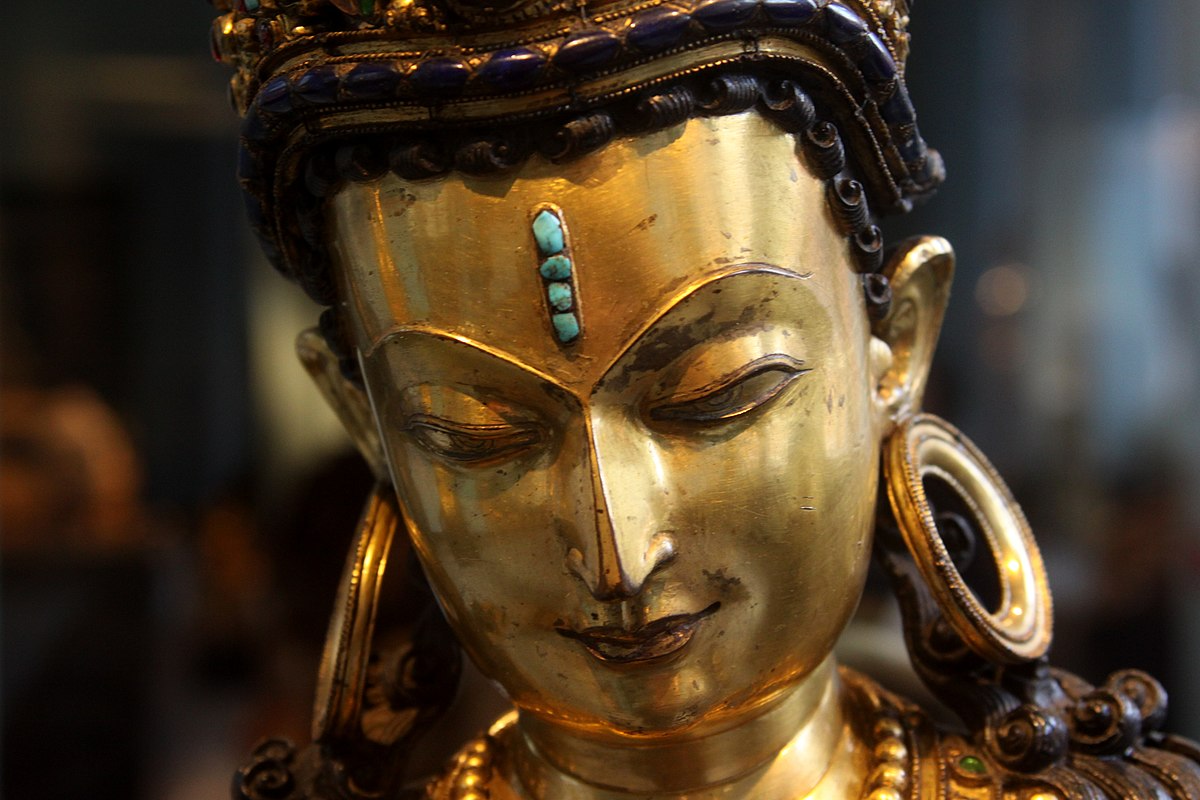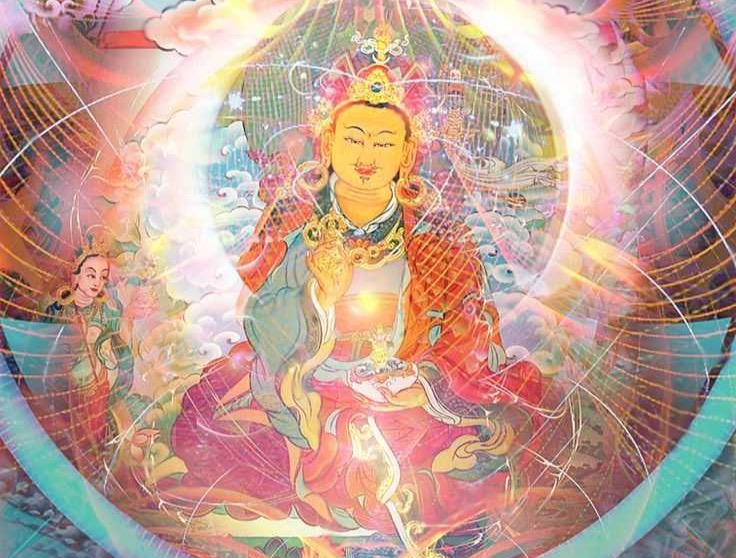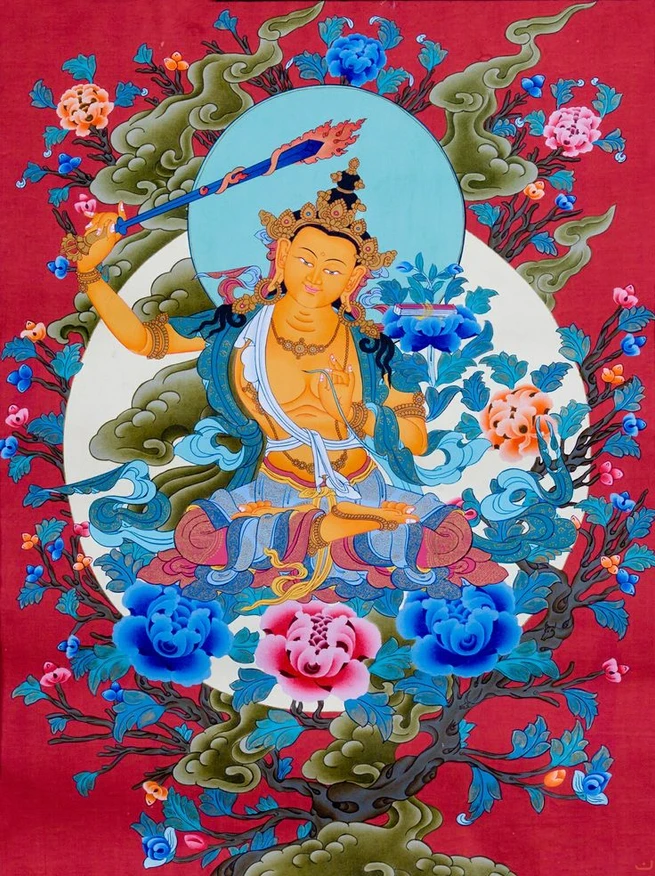Mahayana Buddhism places significant emphasis on the concept of the
bodhisattva, often described as the “enlightenment being,” presenting it as the ideal way for a Buddhist to lead their life.
Who is a Bodhisattva?
The Bodhisattva is an enlightenment being who decided to stay in this world in order to help others attain enlightenment.
At the heart of the bodhisattva path lies a selfless dedication to the welfare of others. Bodhisattvas embody compassion, empathy, and an unyielding commitment to alleviating the suffering of all living beings. They selflessly put others’ needs before their own, striving to guide and support them on their journey towards enlightenment.
The path of the bodhisattva is not exclusive to a select few; rather, it is open for anyone willing to embrace it. It represents a way of life, a profound commitment to selflessness and an unwavering desire for the liberation of all beings from suffering, regardless of their identity or background.
What is Bodhicitta?
A key element of the bodhisattva path is bodhicitta, the altruistic intention to achieve Buddhahood not for personal salvation but for the greater good of all sentient beings. It is a spontaneous wish that arises from a deep understanding of interconnectedness, recognizing that every being shares the same fundamental desire for happiness and freedom from suffering.
“All the joy the world contains
Has come through wishing happiness for others.
All the misery the world contains
Has come through wanting pleasure for oneself.”
The Way of the Bodhisattva: Shantideva
The term “bodhichitta” holds numerous nuances that make it challenging to translate accurately. “Bodhi” signifies “enlightenment” or “awakening,” closely related to the concept of a “buddha” itself, while “Citta” denotes “mind,” “thought,” or “attitude.”
Thus, “bodhichitta” can be understood as the “mind of enlightenment” —the mental attitude leading toward Buddhahood and the enlightened state.
It is essential to recognize that bodhichitta encompasses more than just compassion; it is a broader term that inherently includes compassion within its scope.

In accordance with tradition, bodhichitta is believed to manifest on two distinct aspects or levels. Firstly, there is ultimate bodhichitta, which refers to a direct realization of the true nature of phenomena—the wisdom of emptiness. Secondly, there is relative bodhichitta, which involves aspiring to attain the highest good, namely Buddhahood, for the sake of all sentient beings. It encompasses all the practical steps necessary to achieve this noble goal.
Buddhist teachings assert that the mind itself, even in the cycle of samsara, has never been fundamentally alienated from the state of enlightenment – Buddha Nature. In fact, bodhichitta is the inherent true nature and condition of the mind.
Five Paths of the Bodhisattvas
The five paths of mind are stages of spiritual development as we progress along the Buddhist path to reach liberation and enlightenment, and become a Bodhisattva.
This is a very long journey, because one has to earn lots of merit and purify bad karma. It is said that an individual can spend countless aeons to become Bodhisattva.
First Path
The Path of Accumulation – (sambharamarga)
The first path begins with the development of Bodhicitta, which is a wish for all beings to attain Buddhahood and break free from the cycle of Samsara, leading them towards Nirvana.
The reason it is referred to as the “path of accumulation” is because, during this stage, we dedicate ourselves to diligently accumulating merit or good deeds.
Second Path
The Path of Joining – (prayogamarga)
This is one of the shortest stages of mind and is divided into four stages: warmth, summit, acceptance, and supreme attribute. During this stage, one comes remarkably close to seeing the true nature of things – the Buddha Nature.
Third Path
The Path of Seeing – (darshanamarga)
This is where we begin to develop clarity by understanding emptiness or Shunyata and implementing the path into our lives. This is broken down into 7 categories called the Limbs of Enlightenment: Recollection, Separation, Diligence, Joy, Training, Meditation, and Equanimity
Fourth Path
The Path of Meditation – (bhavanamarga)

The path of meditation consists of meditating on and gaining familiarity with the wisdom of emptiness. This is where we move beyond duality, begin to cut through ignorance, and see our true Buddha nature underneath.
Fifth Path
The Path of No-More Learning – (vimuktimarga)
By completing the four previous paths successfully, we attain liberation or Enlightenment. However, attaining Enlightenment doesn’t mean that we won’t be reborn again. As Bodhisattvas, our choice is to stay in this world and help all sentient beings attain enlightenment first.
It is called ‘no-more-learning’, because there is no further training to be done on any path.



